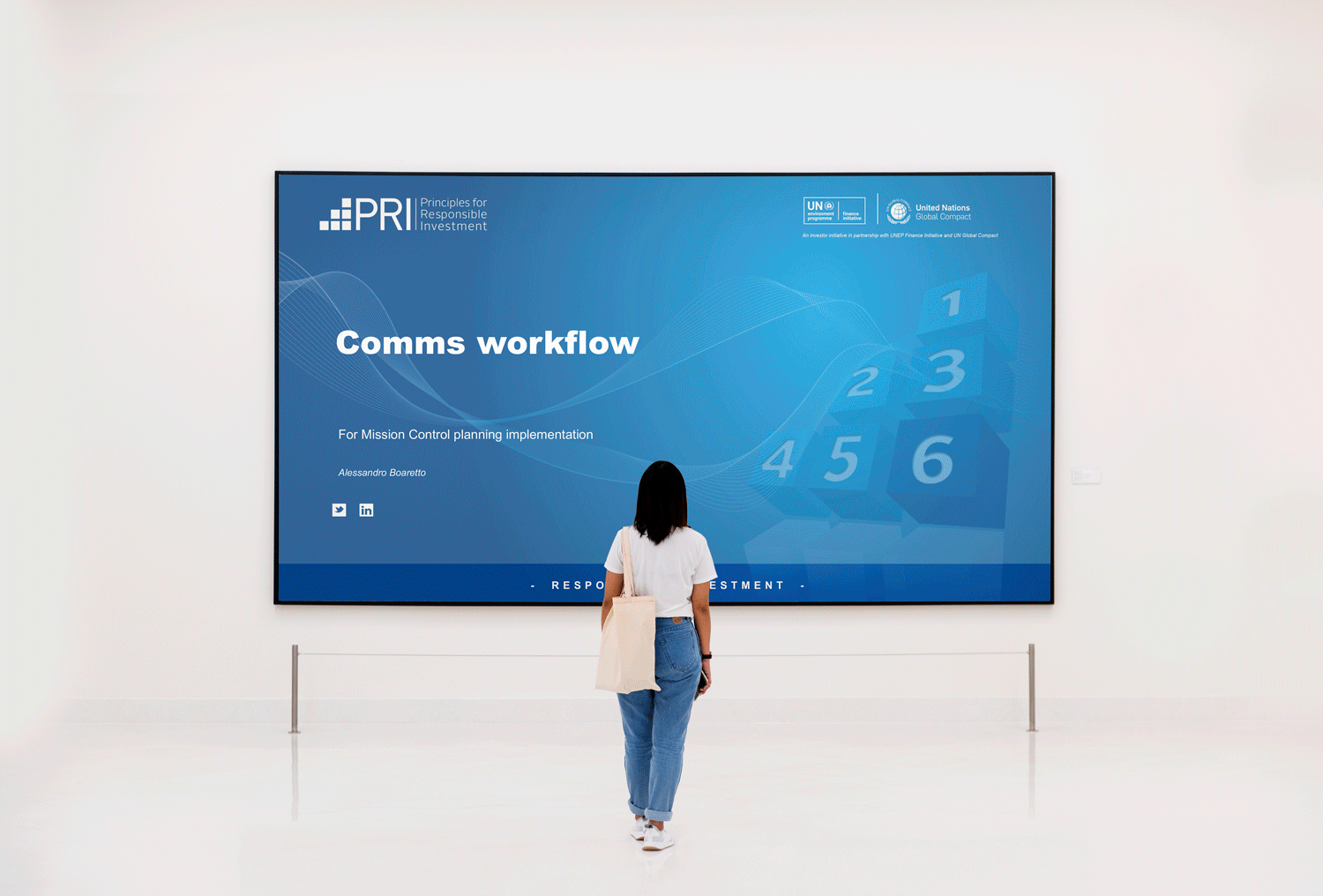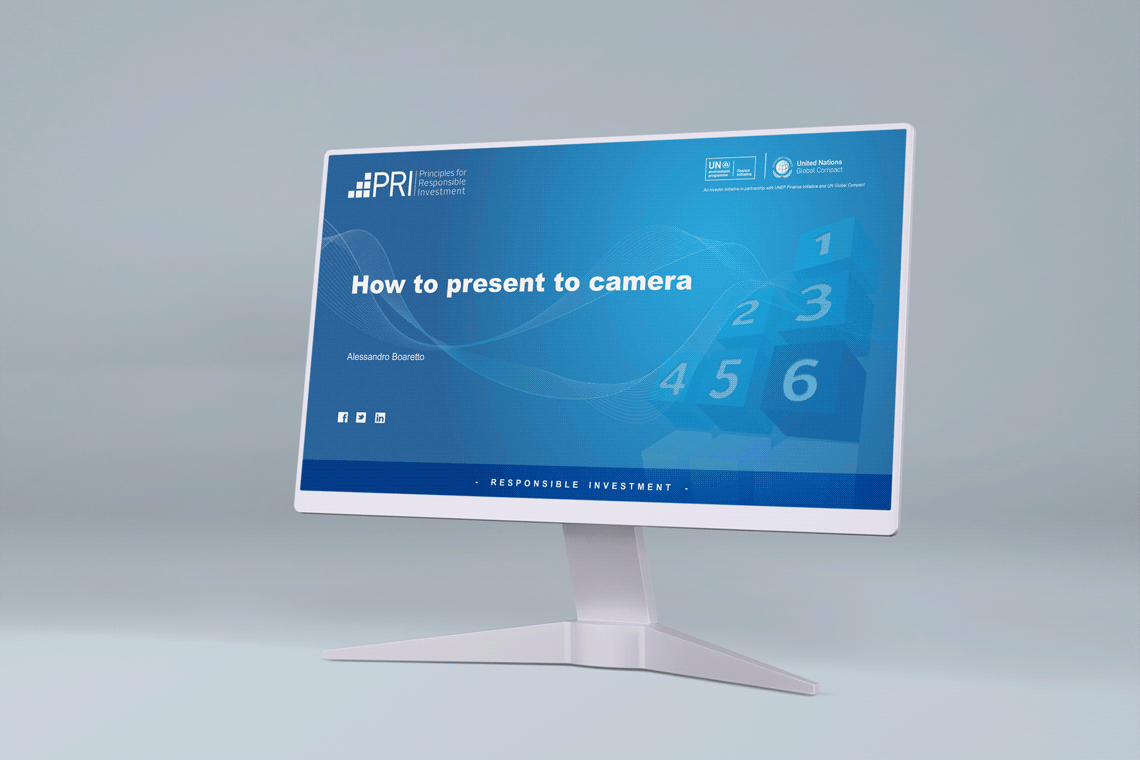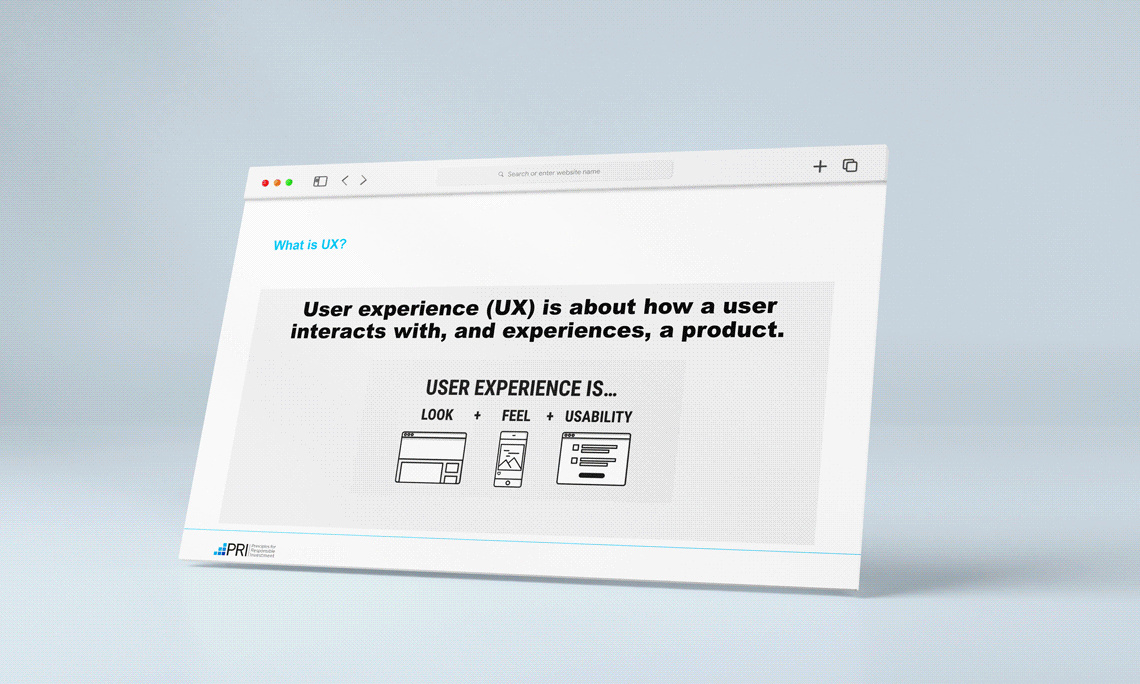hidden
./PRI production processes./

./Streamlining production and promotion workflows
The challenge
During my tenure with the Communication team, I identified several issues regarding the production of guides, reports, and collateral assets needed for promotion. Specifically, the current process lacked project management and consideration for unforeseen delays and unplanned reviews. Additionally, there were multiple communication silos, with events being scheduled independently of project status. All these issues led to undue pressure on the Communication and Design teams, impeding their ability to deliver high-quality work.
The solution
To address these challenges, I consulted with various department heads to determine pain points and identify best practices. Based on my research, I developed a proposal to minimise inefficiencies, by:
- Setting up introductory meetings to discuss overall delivery at the early stage of the project;
- Establishing check-in calls to monitor the status of the projects and review timelines if necessary;
- Setting up a framework/map with linked tasks so the various aspect of the promotion and production can happen in parallel, whenever possible;
- Proposing, as a mid-to-long-term solution, the introduction of a Project Management System (e.g. Asana) to help monitor and assign roles and responsibilities.

The outcome
The proposal was met with initial scepticism from the content creating teams but was eventually embraced as a more structured approach to the production process. The result was a better-quality product and a reduction in silo conversations and planning time. The engagement rates on external channels (Press and Social Media) also increased, leading to a change in how the Communication team was perceived. Asana was rolled out to the entire organisation, leading to better-managed workflows and increased accountability.
As of 2023, the company is continuing to look at hiring more Project Managers across the organisation, and Asana became the standard for tracking tasks and keeping projects on track. Overall, the streamlined production process has resulted in increased efficiency, better-quality products, and higher engagement rates. We are currently expanding on this initiative by introducing request forms that allow tasks to be automatically logged and assigned, furthering accountability and streamlined workflows.
"Ale provides excellent quality of all outputs. Innovative and strategic despite tight time frames and resource constraints. Very collaborative and able to accommodate and build on colleagues' ideas and feedback."
- Feedback from my 360 report
./Video Production
The challenge
The use of videos has become a crucial aspect of successful communication and audience engagement. At the PRI, we recognised the value of this tool and have already collaborated with external agencies to promote our flagship projects. Based on the success we have seen, The PRI was eager to expand its capabilities. This presented an exciting challenge for me as I was tasked with building this new function which could bring this vision to life: delivering high-quality content while finding ways to balance costs.
The solution
In order to ensure success, I took a methodical approach, focusing on building the necessary skills and knowledge to lead this new function with confidence:
- Firstly, I spent a considerable amount of time shadowing our production agencies to understand their workflows and best practices;
- Attended a number of courses on pre and post production techniques to deepen my understanding of the video production process;
- Next, I started renting professional equipment to familiarise myself with different types of cameras, lenses and so on, and used this experience to develop a proposal for the purchase of in-house equipment that would be both cost-effective, mobile and high-quality. I then began producing video assets and templates while building a set of guidelines around processes and production, including storyboards and other key aspects;
- Ultimately, I worked closely with our editorial and social media teams to ensure that we had the necessary skills and expertise to write for video, allowing us to create engaging and effective content across all channels.

The outcome
The outcome of my efforts has been a fruitful one. Through diligent commitment, I have successfully established and expanded the video production function, leading to the creation of high-quality video assets. I had the privilege of learning from and collaborating with talented professionals, who imparted valuable lessons on developing both soft skills, such as effective communication and planning, and technical skills, such as camera operation, composition, and editing.
To further hone my skills, I took up professional courses to enhance my knowledge and keep up with the latest trends in video production. My practical assignment for school based on the Why Working for the PRI campaign, was selected for the prestigious City Lit Film festival, held at the Cinema Museum in Kennington, London, which attests to the quality of my work.
I took a step-by-step approach, spending time shadowing production agencies, and gradually building up our in-house equipment and assets. As a result, I was able to produce more and more videos, develop schedules, plans and processes, and become the go-to person for anything video-related.
I was entrusted with interviewing high-level clients in London, New York, and Tokyo for our 10-year anniversary project, and the outcome received praise for my ability to engage CEOs and Senior Directors of some of the largest financial institutions worldwide. Since 2018, I have been heading the video production for our annual conference, PRI in Person. In 2022, I further increased our internal production by hiring an additional full-time motion designer.
Developing a storyboard
Questions we ask as part of our process:
Who is it aimed at?
To help guide:
level of detail, preferred language/terminology, extent of reference to other work, etc.
What is the purpose of the video?
To help guide:
content to include, tone and mood (e.g. informative vs emotive), call to actions to include, etc.
How and where do we want to reach people?
To help guide:
length of video, format and style, dissemination platforms, etc.
What is the shelf-life of the video?
To help guide:
content to include, level of detail on specific programmes, framing (e.g. as a description of new strategy launch vs as a general description of work we’re doing), etc.
./Promoting UX
One area that particularly captivated me of late was the concept of user experience (UX). Recognising its crucial role in creating meaningful and engaging interactions, I made a conscious decision to pursue a UX certification while balancing my full-time work commitments.
Once I obtained my UX certification, which included creating a full cycle UX project, from research to prototyping, I was eager to disseminate my knowledge within the organisation.
Through our Knowledge Sharing Session Programme, an organisation-wide initiative enabling employees to share expertise on specific topics, I conducted a session on the significance of UX and its potential benefits for the PRI.
I admit a certain level of nervousness as I was presenting something to the entire organisation which was quite intimidating, but I am pleased to say that the presentation received very positive feedback, being recognised as one of the most successful sessions so far, due to its interactive nature, completeness, and accessible content.
This success not only resulted in my involvement in redesigning the online training platform for the PRI Academy but also furthered my understanding of designing impactful digital products more generally.

Forms and survey creation guide
The Survey and Form Creation Guide, was put together in collaboration with our Salesforce team who covered the technical side, and aimed to address several key issues we were facing.
I observed the distribution of brandless surveys to our audience, which undermines professionalism and credibility. Additionally, our staff members relied on multiple tools to gather feedback, resulting in fragmented data. The purpose of this guide was to achieve the following objectives:
- Establish the official survey and form creation tool, FormAssembly, for the PRI;
- Emphasise the significance of setting clear company and survey goals;
- Enhance consistency in formatting, spacing, alignment, and overall content creation;
- Provide guidance on creating more effective and consistent surveys, resulting in improved outcomes;
- Highlight the importance of involving the Communications team at the early stages of the survey process, this limits their ability to support survey promotion and assist with messaging and editing.

The outcome
The outcome of my efforts has been a fruitful one. Our UX session received very positive feedbacks with the 76% of audience rating the presentation either Very Good or Excellent.
The form creation guide, presented and shared to the wider staff, gained numerous praised across the organisation. As a result, many people reach out to us in better understanding how UX can be applied to their projects.
I would like to take a moment and ask you to join me in congratulating Alessandro for obtaining his Professional Diploma in User Experience (UX) Design. Doing all of that extra work while continuing in his full-time position was extremely ambitious and took a lot of effort and dedication on his part, well done!
- Gary, former Comms Director, PRI
./Takeaways
The proposal to minimise inefficiencies in the production process and the introduction of a project management system has resulted in better-quality products, increased engagement rates, and a reduction in planning time.
The introduction of a structured approach to video creation and production has also resulted in better-quality products, increased engagement rates, a reduction in planning time and an increase in cross-collaboration across various teams.
The successful implementation of these strategies and initiatives highlights the value of structured approaches to improve efficiency, productivity, and consistency across organisations.
I am extremely pleased with the results achieved through the Knowledge Sharing Session, and the positive feedback received for the Form creation guide. Despite the challenges of studying while working, I am proud that my dedicated efforts have paid off, contributing to the success and improvement of the organisation's practices.